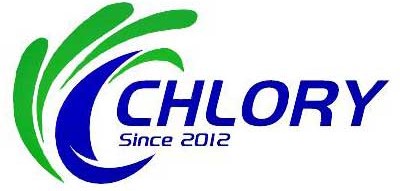As the intensive degree of broiler farming continues to increase, the control of the farming environment faces many challenges: the accumulation of harmful gases such as ammonia, the increased risk of pathogenic microorganisms, and the frequent occurrence of respiratory diseases. Traditional chemical disinfection methods have problems such as drug resistance, high irritation, and residual risks. As an efficient, safe, and broad-spectrum disinfectant, the atomization application of hypochlorous acid provides a new idea for the management of the farming environment. The intelligent hypochlorous acid generator developed by Chlory uses the electrolysis of brine technology to prepare high-purity hypochlorous acid solution on-site, and combines it with the atomization humidification system to achieve an organic combination of disinfection and environmental regulation.
Odor and air quality issues
Main sources of odor: NH₃ (concentration > 20ppm can inhibit growth), H₂S and volatile fatty acids produced by the decomposition of chicken manure
Environmental stress: High concentrations of NH₃ damage the respiratory mucosal barrier and increase the risk of secondary infection with mycoplasma and Escherichia coli.
Characteristics and mechanism of action of hypochlorous acid
Physical and chemical properties
Hypochlorous acid (HOCl) is a neutral small molecule with strong oxidizing properties. When it exists in a non-dissociated form in the solution, it can penetrate the cell membrane of microorganisms and destroy their protein, lipid and nucleic acid structures through oxidation. Compared to hypochlorites (such as NaClO), hypochlorous acid is 80-100 times more effective in killing bacteria.
Bactericidal spectrum and safety
HOCl has a significant inactivation effect on bacteria (including drug-resistant bacteria), viruses, fungi and spores. At appropriate concentrations (50-100ppm), it has no obvious toxicity to mammalian cells, and the decomposition products are water and trace amounts of sodium chloride, with no harmful residues.
Hypochlorous acid has the functions of disinfection, deodorization, cooling and humidification:
Disinfection: The killing rate of pathogens such as Escherichia coli, Salmonella, Mycoplasma, etc. can reach more than 90%.
Deodorization: decomposes volatile organic compounds (VOCs) and skatole, methyl mercaptan, etc. produced by feces decay.
Environmental Control: The atomization process reduces dust concentration and increases humidity, reducing the risk of respiratory diseases.
Technical advantages of Chlory hypochlorous acid generator
How it works
The Chlory generator uses advanced membrane electrolysis technology to electrolyze salt water (NaCl solution) to generate high-purity hypochlorous acid solution (pH 3 - 7 adjustable ), and the effective chlorine concentration can be precisely controlled (10-200ppm , 500-2000ppm, 15,000ppm ). The system has built-in ORP and pH monitoring to ensure solution stability.
System Features
Intelligent control: Automatically adjust hypochlorous acid production and atomization frequency according to environmental parameters
Energy-saving and high efficiency: the cost of using chlorine preparations is reduced by 40-60% compared with traditional chlorine preparations
Modular design : can be integrated into the existing environmental control system and adapted to chicken houses of different sizes
Remote monitoring : Support real-time data collection and analysis on the IoT platform
Application practice of atomization humidification system
System Configuration Scheme
In a standardized broiler house (100m long × 15m wide), 8-10 high-pressure micro-mist nozzles (particle size 10-30μm) are arranged longitudinally and linked with a hypochlorous acid generator to circulate atomization for 5 minutes every 2 hours (50ppm HOCl solution) to maintain a relative humidity of 60-65%.
Environmental improvement effect
Table 1 Comparison of environmental indicators before and after application (28-day-old broiler house)
|
index |
Before application |
After application |
Reduction rate |
|
Ammonia (mg/m³) |
23.5±3.2 |
8.7±1.5 |
63% |
|
Dust (mg/m³) |
4.8±0.9 |
1.2±0.3 |
75% |
|
Airborne colony count (CFU/m³) |
2.1×10⁵ |
3.8×10³ |
98% |
Improved production performance
The data of 6 breeding cycles show that:
The mortality rate decreased by 42% (from 5.3% to 3.1%)
Final weight gain: 5.7% (2.85kg vs 2.70kg)
Feed-to-meat ratio improved by 0.15 (1.62 vs 1.77)
Reduce medication costs by 68%
Key operating points
Concentration control
Daily prevention: 30-50ppm
Disease epidemic period: 80-100ppm (limited time use)
Empty house disinfection: 200ppm (closed fumigation)
Atomization parameters
Particle diameter: <30μm (ensure suspension time)
Frequency: Once every 2-3 hours, 5-8 minutes each time
Avoid 24 hours before and after vaccination
Contact:
Company website: www.chlory.com
Email address: info@chlory.com
